[ad_1]
Lê Hương
HÀ NỘI — Social distancing has not stopped museums in Hà Nội from working hard to prepare exciting new offerings using technology.
The Việt Nam National Fine Arts Museum (VFA), which hosts more than 20,000 pieces displaying the development of Vietnamese fine arts from pre-history to the present day, including nine national treasures, recently launched an app allowing visitors to view the exhibits even amid the pandemic.
Designed by the Việt Nam Mobile Application Software Join Stock Company (VINMAS), the iMuseum VFA app is a multimedia application including high-quality audio, text and photos, helping users visit the museum online or enhancing their in-person experience.
The app can be used on both Android and iOS platforms and allows viewers to watch high-resolution photos, listen to introductions, see the locations of exhibits, view diagrams and see the museum’s rooms.
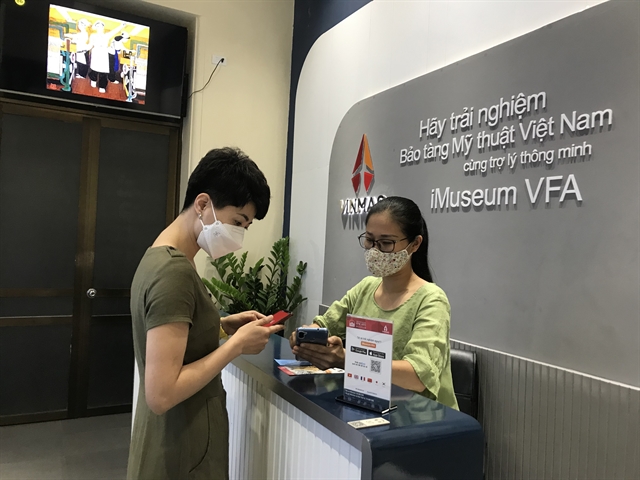
By buying a ticket containing a QR code for VNĐ50,000 (US$2.1) at the museum or online, viewers can use the app for eight hours. The app is now available in Vietnamese, English, French, Chinese, Japanese, South Korean, Spanish and Italian. German and Russian languages will be added soon.
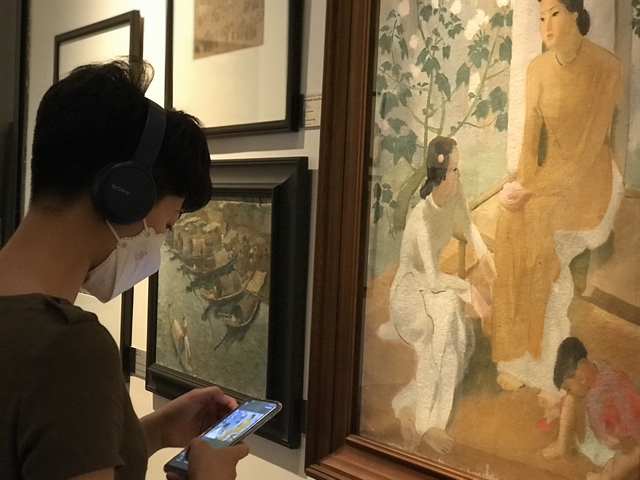
Trần Thị Hương, deputy director of the VFA, told Việt Nam News that the two agencies had developed the app for the past two years as part of the museum’s digital transformation process.
“The product being launched in the present pandemic context is like a reaction of the museum to COVID-19’s impact,” she said.
“We hope during social distancing, the virtual exhibition will lure guests to the museum exhibits in a more special way than before,” she said.
Five months since the app was tested in December last year, 12 per cent of all tickets sold have come through the app.
“We have received positive reactions from the viewers,” Hương said. “They are mostly content with the service. We, however, are trying our best to complete the app.”
Hương said the virtual app is just one of the various ways the museum plans to use digital technology.
Hương said she hopes the same technology will be available soon in all museums nationwide, though many of them have already applied the same technology with different focuses.
For example, the Vietnamese Women’s Museum and the National Museum of Vietnamese History have applied audio guides for their exhibitions.
“Each product will bring the audience new experiences,” she said.
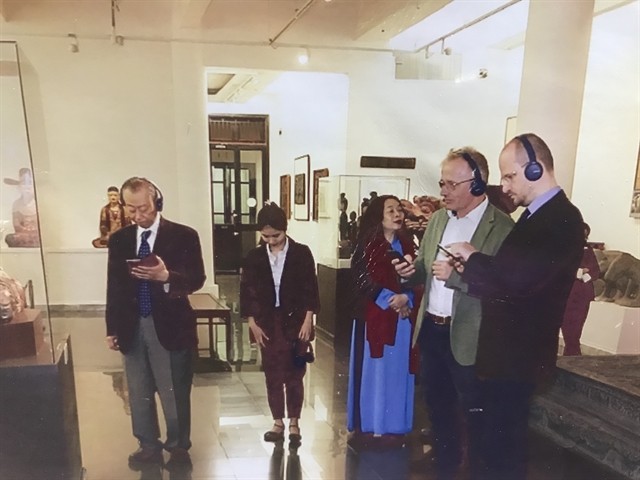
According to Cai Thái Hoàng Uyên, who is mainly responsible for the project from VINMAS, said the team had faced untold difficulties.
“The app is available in many big museums in the world, but they have large budgets,” she said. “We had to build everything from the first brick.
“We created 160 different versions before reaching the final version, which will be further upgraded.
“Besides, searching for native speakers who are fluent in fine arts to edit the introduction was also challenging,” she said.
The number of guests the VFA welcomed in 2020 accounted for just more than 30 per cent of the figure in 2019. Between January and May this year, the museum received some 8,000 visitors. The total number of guests this year is expected to be the same as last year, or even smaller.
“Digital transformation is a must for museums in this pandemic situation,” Hương said. “We will offer sales on special occasions to some needy audiences like students so that many audiences can use the new app.”
Hương said the museum will launch an electronic library in November to display documents on the culture and history of Vietnamese fine arts.
App user Tạ Diễm Phương said the app is quite useful for visitors.
“I often pay a lot of attention to the details of the artwork displayed,” she said. “The app provides me with sufficient information on the work, history of the work, the author as well as the way the work was gathered in the museum’s stock. It’s quite interesting and easy to use.”
Educating future audience
The National Museum of Vietnamese History has also diversified amid the pandemic.
From July last year until the end of 2020, the museum hosted 88 online history lessons for more than 1,300 children, including some living overseas.
Since the beginning of this year, nearly 30 such lessons have drawn 450 pupils of grade 3, 4 and 5 at primary schools.
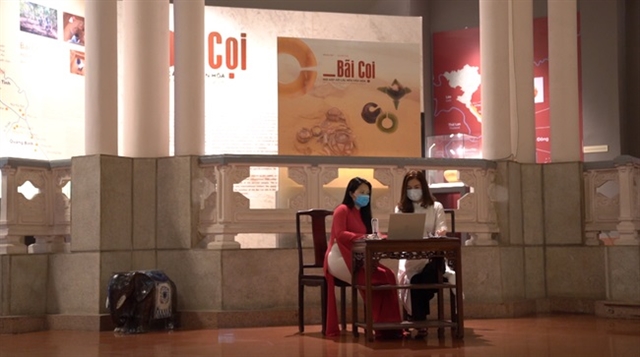
Nguyễn Thị Hà, an employee of the museum, hosts the lessons every Wednesday.
“Even though we are closed to visitors, children can still learn history through Zoom,” she said. “Each lesson often lasts for one hour including a lecture, seeing exhibits, watching a cartoon and a quiz.
“If the children do not like it, no one can force them to focus in front of the computer,” she said. “Other staff and I have learnt children’s psychology and learnt teaching methods from teachers at school to inspire the children.”
Nguyễn An Phương, a parent, said her son looks forward to the lesson every week.
“He is stuck to the computer the whole time,” she said.
Her son, Đinh Tuệ Minh in grade 3 at Lê Ngọc Hân Primary School said he is most excited by the quiz session, during which he earns many stars.
“I hope the pandemic will be controlled soon so that we can take our 10th lesson at the museum,” he said. “At the time, the teacher will give a gift to the ones with most stars.”
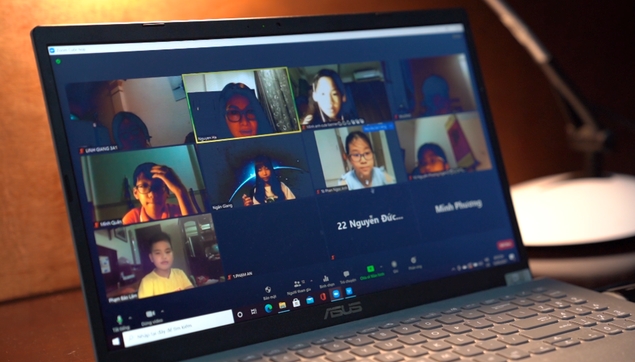
The lessons are free. The museum has hosted 12 courses, each consists of 10 lessons with about 20 primary pupils.
“I think it’s a creative way to teach children history, a ‘dry’ subject at school,” Phương said.
According to statistics, the number of guests visiting the museum in the last year fell 93 per cent against the figure before March 2020 when the pandemic hit.
Refreshing period
Staff at Hà Nội Museum, meanwhile, have set up an exhibition area called Hà Nội Nature, one of six topics they will focus on in the next few months.
The area helps visitors understand the rich diversity of the capital’s natural environment through exhibits, photos and modern technology.
“We have consulted scientists, who have done research on history, culture and museums in and outside the country,” said deputy director Đặng Minh Vệ. “We hope to draw more visitors thanks to a new way of approach, display and bring visitors new experiences.”
The Việt Nam Museum of Ethnology has also been preparing for new experiences for children during the summer holiday.
“We have designed a suitable playground for families, where children can play folk games with their parents,” said Trần Hồng Hạnh, deputy director of the museum.
“They can see water puppetry, learn traditional handicrafts at a safe distance,” he added.
Mai Hạnh Ngân, a parent, said she felt safe taking her children to the museum.
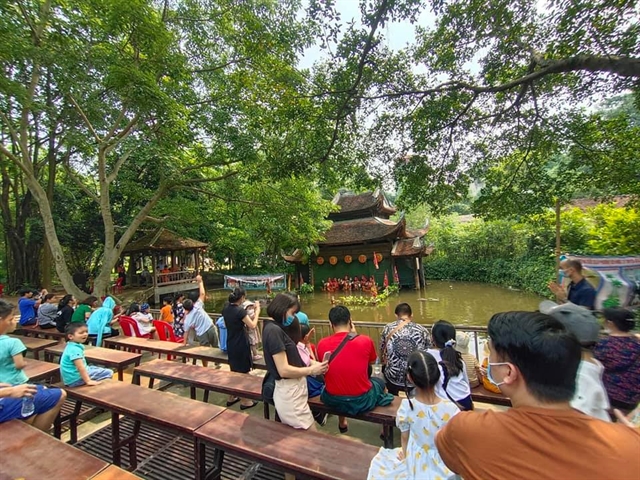
“We often spend half a weekend day at the museum, where there are many green trees, spaces. The staff reminds us of COVID-19 prevention tips,” she said.
In addition, the Việt Nam National Museum of Nature offers virtual exhibitions on the museum’s website.
“We interact with visitors through our website with in-depth pieces of writing and news,” Vũ Văn Liên, deputy director of the museum said. “We plan to promote experience activities aiming at pupils and students like making replicas of insects, dinosaur fossils, sea creatures or making masks of animals.” VNS

[ad_2]
Source link
